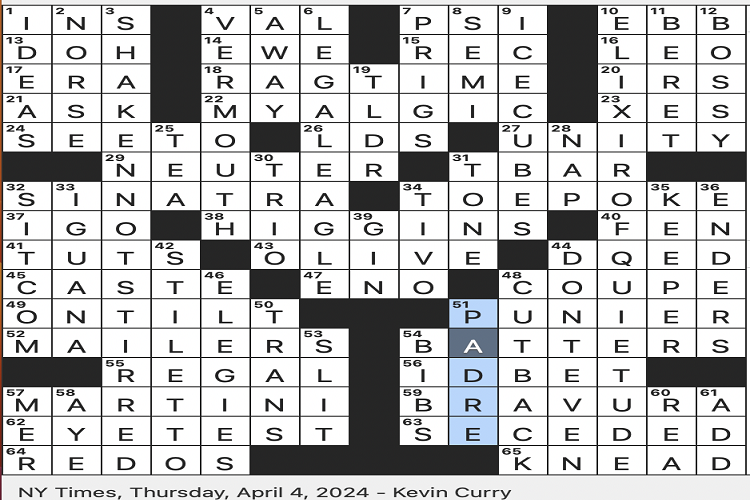Crossword puzzles are a satisfying manner to have interaction the thoughts, assignment your intellect, and examine new records whilst having fun. For puzzle fans, there’s nothing extra pleasant than solving a elaborate crossword, in particular in terms of the ones clues that hint at a selected art form or cultural reference. One of the routine yet enigmatic clues determined in crossword puzzles is the “Oriental artwork form.”
This blog will take you on a journey through the exclusive elements of this puzzle clue, exploring oriental art bureaucracy, their ancient importance, and why they remain a popular crossword problem. Whether you’re a pro solver or simply curious approximately oriental artwork, through the cease of this article, you’ll have a deep understanding of this clue and experience equipped to remedy it yourself.
Introduction to Crossword Puzzles
Crossword puzzles date returned to 1913 when Arthur Wynne, a British journalist, created the first “phrase-move” puzzle for a Sunday newspaper. Since then, crosswords have evolved into one of the most liked puzzle forms globally. These puzzles take a look at solvers on their information of language, tradition, history, and diverse different topics, frequently using clues that require both literal and lateral questioning.
Among the wide variety of topics featured in crosswords, artwork and culture frequently present a number of the more tough clues. The “oriental artwork form” clue, for instance, combines factors of cultural appreciation and art history. But what precisely does “oriental art form crossword clue” imply on this context, and what artwork paperwork may want to it talk to?
What Does “Oriental” Mean in Crossword Puzzles?
The term “oriental” is regularly used to describe art, way of life, or objects originating from East Asia, particularly countries like China, Japan, Korea, and India. In crosswords, the word “oriental” refers to these regions and their wealthy cultural heritage.
While the term “oriental” has traditionally been used to describe Eastern cultures, it’s important to understand that these days, the phrase is considered old and even offensive in positive contexts. In modern-day terminology, many select the phrases “Asian” or “East Asian” to describe these art bureaucracy. However, within the world of crossword puzzles, where abbreviations and wordplay often rule, traditional phrases like “oriental” nevertheless persist, creating clues that pay homage to those traditional descriptions.
Popular Oriental Art Forms in Crossword Puzzles
Understanding the various oriental artwork bureaucracy that appear in crossword puzzles can be important for solvers. These artwork bureaucracy are numerous and may cowl visual arts, architecture, pottery, performance, or maybe literature. Here are a few examples that you may stumble upon:
a. Calligraphy
Calligraphy is one of the most significant and revered artwork paperwork in lots of East Asian cultures, mainly China and Japan. Using brushstrokes and ink, artists create lovely, flowing script that is taken into consideration each a shape of writing and a piece of art. Calligraphy is often referenced in crossword clues as an “Oriental art shape” because of its giant use and cultural importance.
In a crossword puzzle, a clue like “Oriental art form” would possibly factor to the phrase “calligraphy,” especially if the quantity of letters inside the solution fits the clue’s area. Calligraphy, with its ancient origins and complicated fashion, is a symbol of East Asian artistry.
b. Origami
Origami, the Japanese art of paper folding, is some other commonplace oriental artwork form observed in crosswords. The phrase “origami” itself is derived from “ori” (folding) and “kami” (paper), making it a great in shape for crossword puzzles that ask for an “oriental art form” in a short range of letters. This traditional Japanese artwork involves folding a unmarried sheet of paper into difficult designs, frequently corresponding to animals or items.
c. Ikebana
Ikebana, the Japanese art of flower arranging, is every other stunning example of an oriental art form. It emphasizes balance, concord, and simplicity, the usage of minimal flora and flowers to create lovely preparations.
In crossword puzzles, a clue referring to an “oriental artwork shape” with a focus on plant life or flowers may want to cause “Ikebana.”
d. Mandalas
Mandalas are intricate, symmetrical designs originating in Indian and Tibetan tradition, frequently related to Hinduism and Buddhism. These geometric styles are used for meditation, spiritual guidance, and creative expression. Mandalas are created using sand, paint, or different materials, symbolizing the universe and the interconnectedness of existence.
A crossword clue pointing to an oriental art shape associated with spirituality or geometry might be referencing “mandalas.”
The Historical Roots of Oriental Art
The historic roots of Oriental art run deep, spanning centuries and encompassing various cultures across East Asia, Southeast Asia, and the Middle East. Oriental art is deeply intertwined with the philosophical, non secular. And also, social traditions of these regions, each contributing to its distinct styles and paperwork. In China, historical artwork paperwork like calligraphy and ink painting were influenced by way of Confucianism, Taoism, and Buddhism, emphasizing harmony, balance.
Japan’s wealthy creative background includes sensitive bureaucracy like **origami** and **ukiyo-e**, which capture moments of ordinary existence. And nature with precision and ease. Meanwhile, Indian art has long been shaped by way of Hinduism and Buddhism, generating difficult sculptures and temple carvings that reflect religious and cosmic beliefs. The Persian have an effect on inside the Middle East brought lovely visual arts consisting of tile work and miniature artwork, often seen in mosques and manuscripts.
Each of those cultures contributed to what is extensively called “Oriental artwork,” blending conventional craftsmanship with profound religious. And philosophical that means. Over time, those art bureaucracy have developed but stay deeply rooted inside the values in their respective cultures.
Why Oriental Art Forms Appear in Crossword Puzzles
Crossword puzzles are designed to task the solver’s understanding of a wide variety of subjects, from records and literature to artwork and way of life. Oriental artwork paperwork are a rich source of concept for crossword creators due to their splendor, complexity, and cultural significance.
One of the reasons why oriental artwork paperwork appear so regularly in crosswords is their exclusive nature. Words like “origami,” “calligraphy,” and “mandala” are not most effective visually striking however also evoke a sense of marvel and intrigue. Additionally, the fantastically quick period of many oriental artwork terms makes them ideal for fitting into crossword grids.
The diversity of oriental art bureaucracy also lets in crossword creators to craft clues that adjust in trouble. A easy clue like “Japanese paper folding” would possibly result in the solution “origami,” while a extra cryptic clue like “art form with flowing strokes” should trace at “calligraphy.”
How to Solve Crossword Clues About Oriental Art
Solving crossword clues approximately Oriental art may be both challenging and worthwhile. Here are a few tips to make it easier:
- Understand the Clue’s Language: Look for keywords like “Eastern,” “Asian,” “Japanese,” or “Chinese” that imply the cultural origin of the art. Clues might confer with precise international locations or materials, such as “Japanese paper-folding” for “Origami” or “Eastern ink art” for “Calligraphy.”
- Pay Attention to Letter Count: The quantity of letters inside the solution can slim down opportunities. For example, “Ikebana” (Japanese flower arranging) is a seven-letter solution, while “Sumi” (a form of ink painting) is a 4-letter word.
- Cultural Context: Understanding the cultural historical past of the artwork shape is key. For instance, Japanese artwork paperwork like “Origami” and “Ikebana” are commonplace in puzzles, even as Chinese calligraphy and ink painting are frequent references.
- Use Cross-References: Solve intersecting solutions to expose letters that can assist deduce an appropriate phrase for the Oriental art clue.
The future of oriental art form crossword clue
The future of oriental art form crossword clues will possibly evolve alongside the developing hobby in worldwide cultures and the growing recognition of crosswords as an highbrow interest. And also, media, crossword puzzle creators may contain a much wider range of Eastern artwork bureaucracy into their clues.
Additionally, with the rise of technology in puzzle creation, solvers might also come upon greater interactive. Or dynamic clues related to oriental artwork forms, probably requiring deeper know-how or cultural context. The destiny of these crossword clues could also replicate a broader reputation of numerous East Asian, Southeast Asian. And also, Central Asian artistic traditions, further enriching the range of crossword puzzles.
As the puzzle-fixing community grows greater globally connected, we may also see clues that challenge solvers to discover the intricacies of oriental artwork in more intensity, fostering each an appreciation for. And also, an understanding of those wealthy cultural heritages.
Read More: Money 6x investment trusts:Is It Real? A Comprehensive Guide
Frequently Asked Questions (FAQs)
- What is the Japanese art form crossword 5 letters?
The answer is usually “Origami.”
- What is another word for restrain crossword?
A common answer is “Curb.”
- What is a thin layer of decorative wood crossword?
The answer is often “Veneer.”
- What is another word for trainee crossword?
The answer is typically “Intern.”
Conclusion
Solving an oriental art form crossword clue can sense like uncovering a chunk of cultural history. Each clue invites you to discover traditional Eastern practices like origami, calligraphy, or ikebana, mixing mission with discovery. As you crack the puzzle, you furthermore mght advantage insights into artwork paperwork which have fashioned civilizations. Next time you stumble upon any such clue, embody it not just as a puzzle, but as a journey into the world of oriental artistry.
Don’t Miss: Exploring the Civil National Business Centre and Its Role in County Court Proceedings

